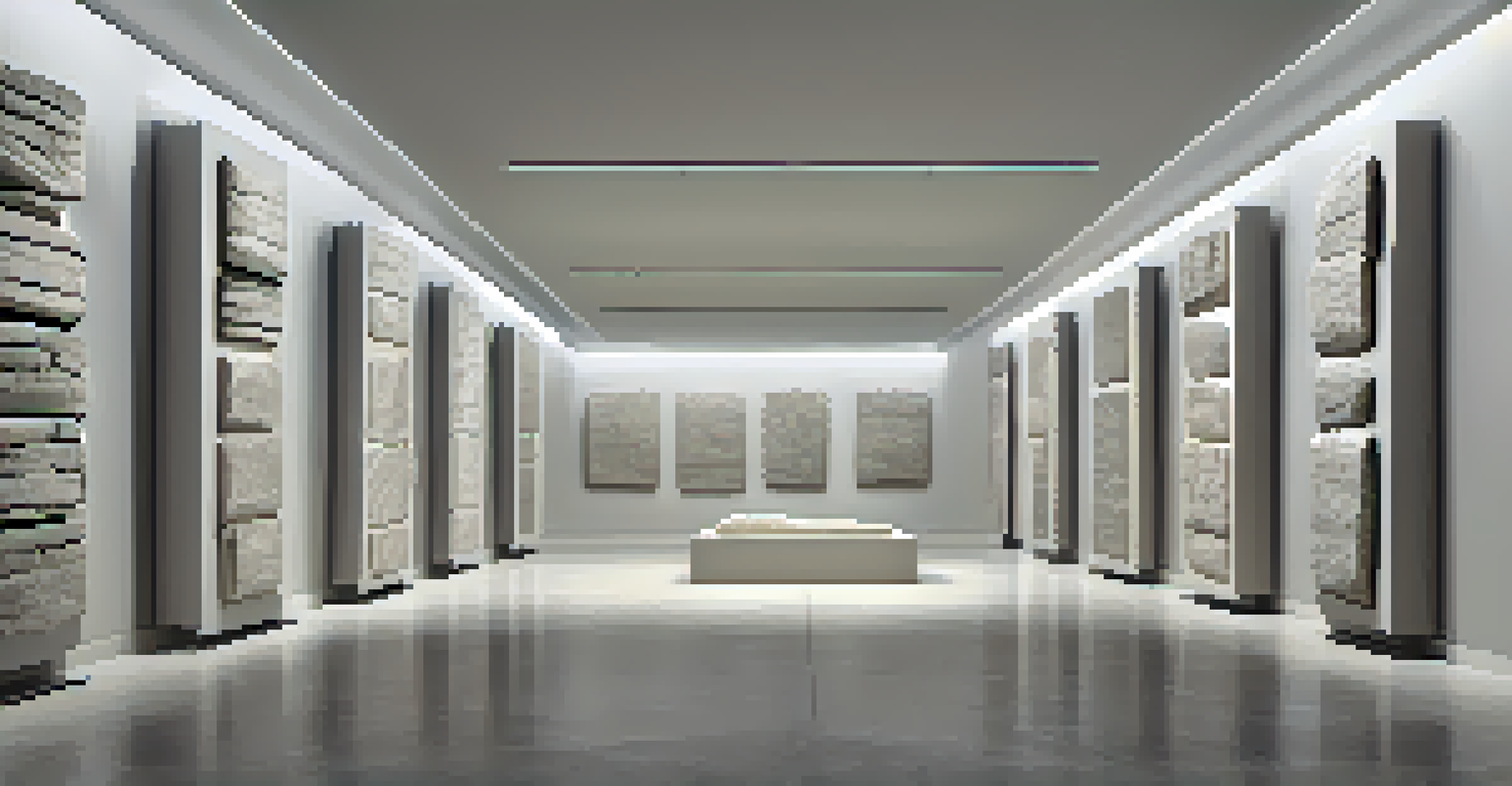Carving and Conceptual Art: Bridging Mediums in Modern Works

Understanding Carving: More Than Just a Technique
Carving is often seen as a traditional art form, but it's so much more. It involves skillfully shaping materials like wood, stone, or metal into expressive forms. This tactile process connects the artist to their medium, allowing for a deep exploration of texture and form.
Art is not what you see, but what you make others see.
Imagine a sculptor chiseling away at a block of marble. Each strike reveals not just a shape, but an emotion and a story that the artist wishes to convey. This connection between the artist and their medium is crucial in understanding how carving transcends mere technique.
By engaging physically with the material, artists can evoke a visceral experience for the viewer, making carving a powerful medium for storytelling in the art world.
The Rise of Conceptual Art: Defining Ideas Over Objects
Conceptual art shifted the focus from the physical artwork to the ideas behind it. In this movement, the concept takes precedence, often challenging traditional notions of what art is. This can create a more profound dialogue between the artist and the audience.

Consider a piece of conceptual art that exists only as an idea or a performance, rather than a tangible object. The artist's intention and the viewer's interpretation become the centerpiece of the experience. This often leads to thought-provoking conversations about creativity and meaning.
Carving: Art Beyond Technique
Carving transcends mere technique by connecting artists to their materials, allowing for deep emotional and narrative expression.
As this movement gained momentum, it encouraged artists to think outside the box, leading to exciting new forms of expression that blur the lines between various art mediums.
Bridging the Gap: Carving in Conceptual Art
Combining carving with conceptual art creates a unique fusion that invites viewers to engage with both technique and idea. Artists can use carving to concretize abstract concepts, making them more accessible and understandable. This blend of physical and conceptual challenges traditional perceptions of both mediums.
The artist is a creator of things; and therefore he must be a creator of the world.
For instance, a carved sculpture that represents a social issue can provoke thought while showcasing the skill involved in its creation. This approach not only highlights the artist's technical abilities but also deepens the viewer's understanding of the underlying message.
By bridging these two art forms, artists can create immersive experiences that resonate on multiple levels, encouraging a richer dialogue between the work and its audience.
Influential Artists Merging Carving and Conceptual Ideas
Several contemporary artists exemplify the blend of carving and conceptual art. For example, artists like Anish Kapoor utilize carving techniques to create large-scale installations that challenge perception and provoke thought. Their works often leave viewers questioning not just the physical form but also the ideas behind them.
Another notable example is the work of David Nash, who incorporates natural materials and carving into his conceptual pieces, inviting reflections on nature and time. His approach emphasizes how carving can serve as a medium for deeper philosophical inquiries.
Conceptual Art Challenges Norms
Conceptual art prioritizes ideas over physical objects, fostering a dialogue that invites viewers to explore creativity and meaning.
These artists showcase how the marriage of carving and conceptual art can lead to innovative and impactful works that push boundaries and invite engagement.
The Role of Materiality in Carving and Conceptual Art
Materiality plays a crucial role in both carving and conceptual art, shaping the viewer's experience and interpretation. The choice of material can enhance the message, whether it be the warmth of wood or the coldness of stone. This deliberate selection adds another layer of meaning to the artwork.
For instance, a carved piece made from reclaimed materials can speak to themes of sustainability and environmental consciousness. The material itself becomes part of the narrative, making the concept more tangible and relatable to the audience.
Understanding how material influences perception allows both artists and viewers to appreciate the depth of connection that exists in these modern works.
Audience Engagement: Interpreting Carved Conceptual Art
Engagement with carved conceptual art often relies on the viewer's interpretation and emotional response. Unlike traditional art forms where meaning might be more straightforward, these pieces invite audiences to explore their feelings and thoughts. This creates a dynamic relationship between the artwork and the viewer.
When encountering a carved sculpture with a conceptual basis, viewers are prompted to ask questions: What does this represent? How does it relate to my own experiences? This interaction fosters a deeper appreciation for the art and its complexities.
Fusion of Carving and Conceptualism
The combination of carving and conceptual art creates immersive experiences that provoke thought and engage audiences on multiple levels.
Ultimately, the success of this engagement lies in the viewer's willingness to explore and interpret, making each experience unique and personal.
Future Directions: Evolving Practices in Art
As art continues to evolve, the integration of carving and conceptual ideas is likely to expand further. Artists are increasingly experimenting with technology, such as digital carving and 3D printing, adding new dimensions to their work. These innovations can challenge traditional boundaries and broaden the scope of artistic expression.
Moreover, the conversation around sustainability and social issues will likely influence future works, with artists using carving to highlight these important themes. The intersection of technology and traditional methods may lead to groundbreaking pieces that resonate with contemporary audiences.

In this ever-changing landscape, the blending of carving and conceptual art promises to inspire new generations of artists, pushing the limits of creativity and expression.